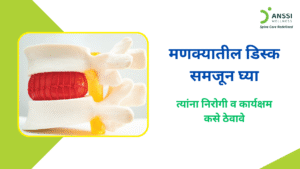Sciatica is a common condition that affects millions of people, often causing sharp, radiating pain from the lower back down through the buttocks and into one or both legs. This discomfort is typically the result of compression or irritation of the sciatic nerve, which is the longest nerve in the body.
While factors like posture, prolonged sitting, and injuries play a key role in aggravating sciatica, one often overlooked contributor is how you sleep. The position you adopt at night can either worsen the pain or promote relief. If you are living with sciatica, adopting the right sleeping posture can significantly impact your quality of life.
How Sleeping Affects Sciatica
Spinal alignment is crucial when it comes to sciatica.
While you’re asleep, your spine should remain in a natural, neutral position to avoid putting extra pressure on the sciatic nerve. Poor sleeping positions can cause your spine to twist, arch, or collapse, which may worsen nerve compression and inflammation.
On the other hand, supportive and well-aligned positions help ease pressure on the lower back and encourage proper circulation and muscle relaxation. Therefore, how you sleep can either support your body’s healing process or cause you to wake up in more pain than you went to bed with.
Worst Sleeping Positions
Certain sleeping habits can actually aggravate sciatica symptoms and make mornings difficult. Let’s take a look at the positions that may be doing more harm than good.
- Sleeping on the stomach: This is one of the worst positions for people with sciatica. It forces your spine into an unnatural arch, especially in the lower back. This hyperextension increases pressure on the lumbar region, where sciatica often originates, thereby worsening nerve compression. Additionally, it places strain on the neck due to the need to turn the head to the side.
- Twisted sleeping posture: Sometimes, people unintentionally twist their bodies while sleeping, for example, lying on the side with the upper leg rotated forward. This creates an imbalance in the spine and pelvis, leading to muscle tension and misalignment. Over time, this misalignment can intensify sciatic pain and result in stiffness or even muscle spasms upon waking.
- Unsupported mattress or pillows: Even if your sleep position is reasonable, using a sagging mattress or flat pillows can throw your spine out of alignment. This leads to uneven pressure distribution, triggering pain and discomfort through the night.
Poor sleeping posture not only contributes to increased sciatic nerve irritation but also leads to poor circulation, tight muscles, and disturbed sleep cycles, all of which hinder recovery.
Best Sleeping Positions
Fortunately, simple adjustments to your sleep setup can help manage and reduce sciatica symptoms effectively. Here are the best sleep positions and supportive tools to try:
- Side sleeping with a pillow between your knees: This is one of the most recommended positions for people with sciatica. When you sleep on your side, placing a pillow between your knees helps align the spine, pelvis, and hips. This reduces pressure on the lower back and keeps the spine in a neutral position, minimising strain on the sciatic nerve. If possible, try to sleep on the side opposite the leg experiencing pain.
- Back sleeping with a pillow under the knees: For back sleepers, placing a pillow or rolled towel under the knees helps flatten the lower back against the mattress. This position reduces tension in the lumbar spine and supports the natural curve of the lower back, alleviating nerve pressure. It also promotes even weight distribution, reducing the chance of localised stress on any one part of the spine.
- Use a firm mattress and ergonomic pillows: Regardless of your position, a mattress that offers medium-firm support helps keep your spine aligned throughout the night. Pillows should also support the natural curve of your neck without pushing it too far forward or letting it sink back too much.
These adjustments might seem small but can make a big difference in both pain levels and sleep quality. In fact, consistent use of these positions can help your body recover faster by promoting healing during rest.
About ANSSI:
ANSSI Wellness focuses on improving the quality of life for patients suffering from spinal issues, aiming to provide relief where other conventional treatments have failed. Through advanced non-surgical spinal decompression treatment, ANSSI is committed to helping patients avoid surgery and recover in a safe, effective, and compassionate environment.
Connect with ANSSI Wellness on LinkedIn, Instagram, and Facebook for expert guidance.



